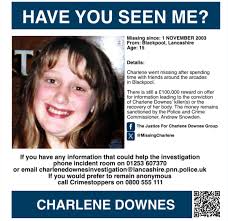
Introduction
The case of Shannon Matthews, a young girl who went missing in 2008, is one of the most infamous kidnapping cases in British history. It not only captivated the nation but also sparked conversations around media, parental responsibility, and societal response to crime. Understanding the events leading to her disappearance and the subsequent investigation reveals a complex narrative that continues to resonate.
The Disappearance
On February 19, 2008, nine-year-old Shannon Matthews disappeared from her home in Dewsbury, West Yorkshire, sparking an extensive search operation that involved local residents, police, and media outlets. Her disappearance led to a `missing persons` campaign that gripped the nation. The media spotlight quickly intensified, with the family appealing for her safe return, drawing in national news coverage and heartfelt public sympathy.
Finding Shannon
After a 24-day search, Shannon was found on March 14, 2008, hidden in the base of a divan bed in the home of a man known to her family. Her safe return was initially celebrated, but as details of the case emerged, the context of her disappearance raised eyebrows and changed the narrative entirely.
The Investigation
As the investigation unfolded, police began to suspect that Shannon’s disappearance was a hoax orchestrated by her mother, Karen Matthews. Evidence suggested that Karen planned the incident for financial gain, aiming to profit from media reports and public donations. This led to her arrest and the eventual trial, which revealed a distressing picture of familial manipulation and deceit.
Trial and Sentencing
In 2009, both Karen Matthews and her accomplice were convicted of kidnapping and false imprisonment, receiving substantial prison sentences. The revelations surrounding the case shocked the public and raised concerns over how media narratives can influence perceptions of crime and victimhood.
Conclusion
The Shannon Matthews case remains significant, serving as a cautionary tale about media exploitation, crime, and parental responsibility. It opened discussions on the ethics of reporting, how vulnerable families are treated, and the complexities of public empathy. As we reflect on this case, it serves to remind us of the importance of critical thinking in media consumption and the understanding that not every story is as it appears. The long-standing impact on community trust and media relations continues to be felt a decade later, as the public grapples with the intricacies of sensationalised crime stories.
You may also like

The Life and Crimes of Rehman Dakait

The Ongoing Mystery of Charlene Downes
